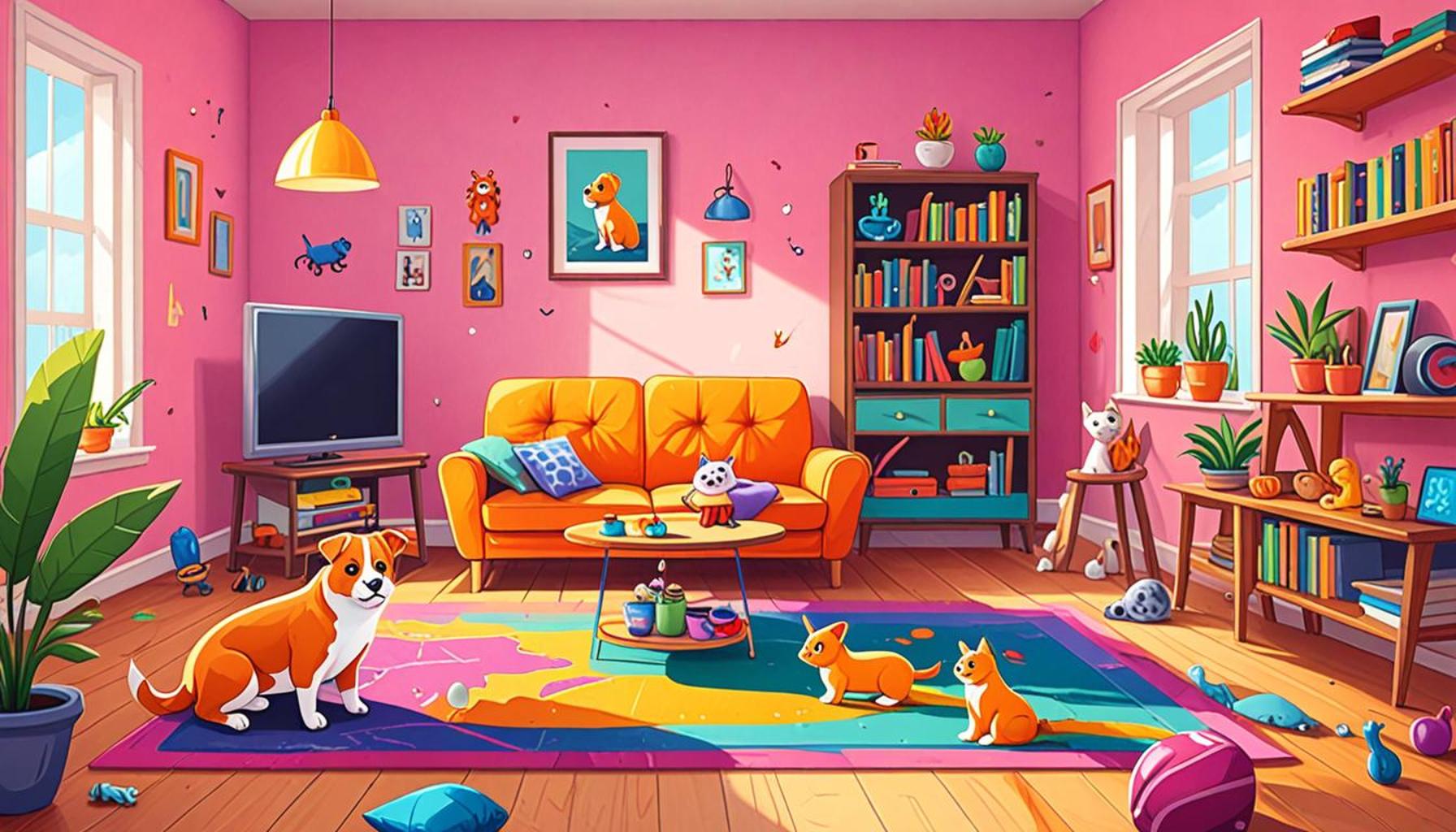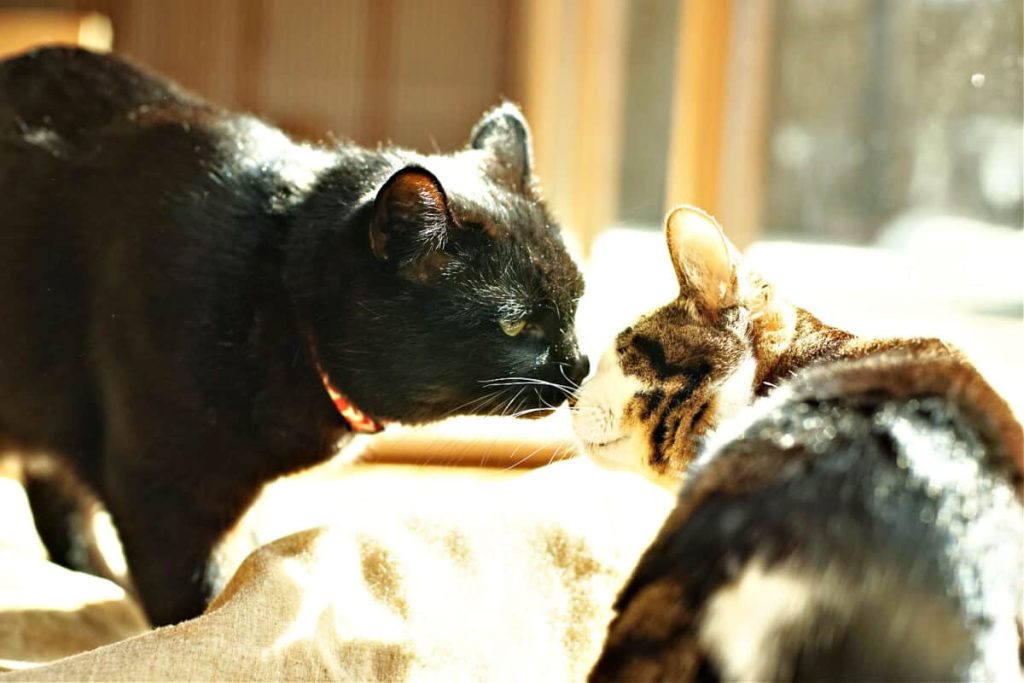How to Introduce a Second Pet Harmonious Home Integration Tips

Creating a Balanced Home Environment
Introducing a second pet into your household can be both exciting and challenging. The prospect of your pets becoming companions or the joy of expanding your family can be immensely rewarding. However, achieving a harmonious integration can require thoughtful planning and effort. By understanding the needs and personalities of both your existing pet and the new arrival, you pave the way for a balanced coexistence.
Understanding the Dynamics
Before bringing a new pet home, it’s crucial to consider their personalities, compatibility, and individual needs. Here are some important aspects to evaluate:
- Temperament: Will the existing pet feel threatened or friendly? Some pets thrive on companionship while others might be territorial. For instance, introducing a calm and gentle dog to a more assertive cat could require extra precautions.
- Size Differences: How large or small is each pet? A smaller pet may be perceived as prey by a larger, more energetic dog, which can create tension. Understanding these dynamics can help you take necessary precautions during introductions.
- Behavioral Traits: Are there any specific fears or aggressions to address? For example, if your dog exhibits fear-based aggression, it may require a more gradual and controlled introduction to avoid overwhelming them.
Successful integration requires preparation and patience; you must be willing to invest time into the process. Numerous pet owners have navigated this journey with a few helpful tips and tricks aimed at smoothing the process:
- Slow Introduction: Allow them to meet gradually. Start with separate spaces, allowing them to smell each other’s belongings before direct contact. This can help reduce anxiety and allow them to acclimate to each other’s presence.
- Safe Spaces: Create private areas for each pet. Designate specific spots in your home where each pet can retreat, which helps them feel secure and establishes their territory.
- Shared Activities: Engage them in play together. After they have become comfortable in each other’s presence, fun activities, like fetch or playtime with interactive toys, can help strengthen their bond and create positive associations with each other.
By taking the time to prepare and follow strategic steps, you can transform any initial uncertainty into a thriving multi-pet household. Not only does careful integration ensure a joyful and balanced life for your furry friends, but it can also foster a sense of companionship that enhances your pets’ lives and enriches your household. In the world of pet ownership, embracing the journey of introducing new family members is not just about managing their differences; it’s about celebrating diversity within your home.

SEE ALSO: Click here to read another article
Setting the Stage for a Seamless Introduction
When contemplating the idea of introducing a second pet into your home, it’s essential to create an environment that supports both animals’ comfort and well-being. The initial days following the introduction can be crucial in determining the long-term success of your pets’ relationship. Here are key strategies to implement that can significantly enhance the transition and facilitate a smooth cohabitation process:
Preparation is Key
Bringing a new pet into your home isn’t purely about immediate interactions; preparation is vital in crafting a thoughtful approach. Taking time to prepare ensures that both existing and new pets feel secure:
- Research the New Pet: Before choosing a breed or individual, research their typical behaviors and personality traits. Certain breeds are known to be more sociable or more independent, which can heavily influence how they will integrate into your household.
- Assess Your Current Pet’s Needs: Observe your current pet’s habits, preferences, and stressors. Identifying their specific needs helps create a more compatible environment for the newcomer.
- Gather Supplies: Ensure you have all necessary items for your new pet, such as food dishes, a bed, toys, and a litter box or crate. This reduces stress and competition for resources once the new pet arrives.
In addition to logistical preparations, set the tone for a welcoming atmosphere. Favor positive reinforcement methods and patience rather than unpredictable disciplinary actions. Instill a sense of calm in your home, as animals can easily pick up on human emotions and behavioral cues.
Gradual Introductions Matter
Once your new pet arrives, establishing a gradual introduction is crucial. Rushing these early interactions can create unnecessary anxiety, leading to potential conflicts:
- Use a Controlled Environment: Start by introducing them in a controlled space, such as a separate room where they can become familiar with each other’s scents without any direct contact. This separateness can ease the initial feelings of territoriality.
- Monitor Interactions: When the time comes for face-to-face meetings, supervise all interactions closely. Look for signs of stress or aggression, and be ready to separate them if necessary. Positive reinforcement for calm behavior can set the right tone.
- Take It Slow: Depending on the pets’ reactions, allow several sessions of short interactions over a few days or weeks rather than an abrupt, long introduction. This pacing helps each pet acclimate at their own rate.
Remember, patience is key. Building a lasting bond between pets takes time and effort. The groundwork you lay during these early stages can lead to a lifelong friendship. With careful consideration and a strategic approach, your home can flourish with the joyful energy of multiple pets, enriching the lives of all household members.
| Integration Tips | Benefits |
|---|---|
| Gradual Introduction | Helps reduce stress for both pets as they become familiar with each other’s scents and sounds. |
| Safe Spaces | Allows each pet to retreat to a place of comfort, fostering a sense of security and minimizing conflicts. |
| Positive Reinforcement | Encourages good behavior through rewards, establishing a happier coexistence. |
| Shared Activities | Promotes bonding moments that can enhance friendship and harmony in the home. |
By implementing these harmonious integration tips, pet owners can effectively introduce a second pet into the home environment. The gradual approach not only minimizes anxiety but also allows both animals to adapt at their own pace. Creating safe spaces and utilizing positive reinforcement techniques are key strategies that can significantly improve interactions and establish a peaceful living arrangement.
Moreover, shared activities, whether it’s shared meal time or playtime with toys, can foster trust and companionship among pets. This can lead to a more cohesive household environment, ultimately benefiting everyone involved. By taking the time to understand and nurture the unique dynamics of your pet family, you prepare for a successful dual-pet household.
SEE ALSO: Click here to read another article
Fostering Positive Interactions
As the days progress and both pets become more acclimated to each other’s presence, implementing strategies to foster positive interactions is paramount. These interactions not only help in establishing a peaceful coexistence but also contribute to building a stronger bond between your pets. Here are some effective methods to encourage harmonious relationships:
Shared Positive Experiences
Creating shared experiences can be a crucial component in developing a bond between your pets. Activities that encourage teamwork or cooperation can enhance their relationship:
- Joint Playtime: Select toys that both pets can use together, such as a dual-ended tug toy. Participating in play can lead to shared excitement and positive energy, allowing them to see each other in a fun light.
- Feeding Sessions: Start by feeding them close to each other, but not too close to provoke jealousy. Use separate bowls, gradually moving them closer as both pets show comfort. This can help demystify each other’s presence during meal times.
- Praise and Rewards: Whenever your pets interact positively, offer treats or affection. This reinforces good behavior and creates a pleasant association with their new companion. Monitoring their reactions is key—celebrating small victories will go a long way in building trust.
Establishing a Safe Space
Both animals should have access to their safe zones where they can retreat if they feel overwhelmed. It’s important to respect their need for personal space during this transitional period:
- Designate Separate Areas: Provide each pet with designated areas equipped with their bed, toys, and food bowls. This enables them to retreat when necessary and fosters feelings of security.
- Introduce Scent Swapping: Allow your current pet to sniff bedding or toys that belong to the new pet, and vice versa. This practice allows each pet to become familiar with the other’s scent, promoting a sense of comfort when they finally meet.
- Rotate Spaces: Adjust the access to different areas of your home by rotating which pet gets to explore and claim territory at different times. This prevents territorial disputes and the urge to defend their space aggressively.
Understanding Communication Cues
Every pet possesses unique communication styles, and understanding these cues can significantly benefit their interactions. Awareness of body language can help prevent unwanted disputes:
- Recognize Stress Signals: Learn to identify signs of anxiety or aggression, such as growling, hissing, or changes in posture. If you notice these cues, ensure to separate them calmly and allow them to settle before reintroducing.
- Encourage Calm Behavior: If one pet shows signs of discomfort, redirect their focus to a toy or a command they know well. This distraction can help them relax and remain composed.
- Observe Play Styles: Some pets prefer to play vigorously, while others may be more subdued. Pay close attention to how they interact to ensure the play remains friendly and aligned with the comfort levels of both animals.
Integrating a second pet into your household isn’t merely a process of coexistence—it’s a dynamic shift that requires care, consideration, and time. By fostering positive interactions, establishing safe spaces, and understanding communication, you set the stage for a thriving multi-pet home. With the right approach, your animals can form enriching relationships that enhance the joy of your household.
CHECK OUT: Click here to explore more
Conclusion: Building Bridges for a Harmonious Home
Successfully introducing a second pet into your home is not just an act of adding another member to your family; it’s a journey of nurturing relationships and creating a harmonious environment. The strategies outlined above—ranging from fostering positive interactions to establishing safe spaces—are essential in ensuring that your new and existing pets not only coexist but thrive together.
The key lies in patience and understanding. Each pet has its own personality and background, which may influence their integration into your household. Recognizing communication cues can make all the difference in preventing conflicts and promoting friendship. Additionally, monitoring their behaviors and adjusting your approach accordingly could enhance their bond over time.
Moreover, consider exploring resources such as pet training classes or consulting a veterinarian for further guidance. This multifaceted approach not only facilitates harmony but also enriches the lives of your pets and family. As they learn to trust and appreciate one another, you will witness a blossoming friendship that contributes to a more joyful and lively home.
In conclusion, the integration of a second pet is an ongoing process that enriches the life of your household. By implementing thoughtful practices and remaining attentive to their needs, you can create a nurturing atmosphere where both pets feel safe, loved, and happy together. Embrace this chapter of your life with an open heart, and prepare to enjoy the rewarding experiences that come with a multi-pet family.



